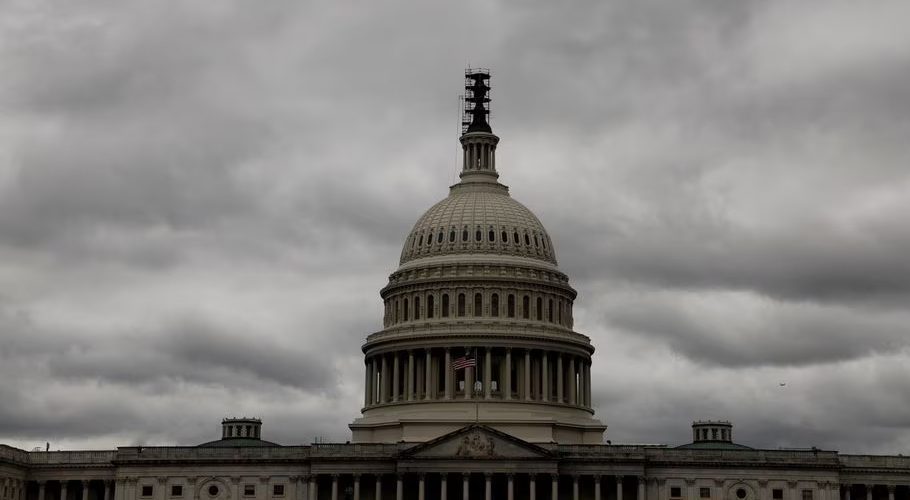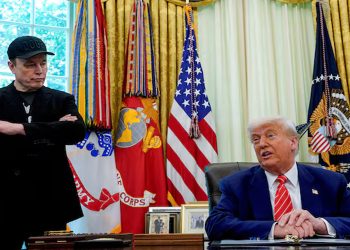U.S. government services would be disrupted and hundreds of thousands of federal workers furloughed without pay if Congress fails to provide funding for the fiscal year starting Oct. 1. Workers deemed “essential” would remain on the job, but without pay.
Many government agencies have not updated shutdown plans they have prepared in the past. Here is a guide to what would stay open and what would shut down:
MILITARY
The 2 million U.S. military personnel would remain at their posts, but roughly half of the Pentagon’s 800,000 civilian employees would be furloughed.
Contracts awarded before the shutdown would continue, and the Pentagon could place new orders for supplies or services needed to protect national security. Other new contracts, including renewals or extensions, would not be awarded. Payments to defense contractors such as Boeing (BA.N), Lockheed Martin (LMT.N) and RTX (RTX.N), formerly known as Raytheon, could be delayed.
The Department of Energy’s National Nuclear Security Administration would continue maintaining nuclear weapons.
LAW ENFORCEMENT
According to the Justice Department’s 2021 contingency plan, agents at the FBI, the Drug Enforcement Administration (DEA) and other federal law enforcement agencies would remain on the job, and prison staffers would continue to work.
Criminal prosecutions, including the two federal cases against former President Donald Trump, would continue. Most civil litigation would be postponed. It is unclear whether the government’s landmark Google antitrust lawsuit would be disrupted, though other antitrust cases have continued through past shutdowns.
Aid to local police departments and other grants could be delayed.
FEDERAL COURTS
Federal courts have enough money to stay open until at least Oct. 13. Activities might be scaled back after that point. The Supreme Court would stay open as well.
CONGRESS
Lawmakers continue to collect paychecks, even as other federal workers do not. Staffers do not get paid, though those deemed essential would be required to work.
TRANSPORTATION
Airport security screeners and air-traffic control workers would be required to work, according to recent contingency plans, though absenteeism could be a problem. Some airports had to suspend operations during a shutdown in 2019 when traffic controllers called in sick.
Training for new air traffic controllers would stop, which Transportation Secretary Pete Buttigieg has warned could worsen a shortage of qualified workers.
FOREIGN AFFAIRS
U.S. embassies and consulates would remain open under the State Department’s 2022 shutdown plan. Passport and visa processing would continue as long as there were sufficient fees to cover operations. Nonessential official travel, speeches and other events would be curtailed.
Some foreign aid programs could run out of money as well.
NATIONAL PARKS AND NATURAL RESOURCES
It’s not clear how national parks, national monuments and other sites would be affected. Many remained open during a 2018-2019 shutdown, through restrooms and information desks were closed and waste disposal was halted. They were closed during a 2013 shutdown.
Wildfire fighting efforts would continue, according to the Agriculture Department’s 2020 contingency plan, though timber sales on national forest lands would be curtailed and fewer recreation permits would be issued.
MUSEUMS
The Smithsonian museums that line the National Mall would close, as would the National Zoo. That would bring a premature end to the Zoo’s farewell celebration for its three giant pandas, which are due to return to China.
SCIENCE
Scientific research would be disrupted as agencies like the National Institutes of Health, the National Science Foundation and the National Oceanographic and Atmospheric Administration (NOAA) would furlough most of their workers, according to recent contingency plans.
The National Aeronautics and Space Administration (NASA) would continue to support the International Space Station and track satellites, but 17,000 of its 18,300 employees would be furloughed.
Weather forecasts and fisheries regulation would continue, as would patent and trademark reviews. Tests of new drugs and medical devices would continue.
HEALTH
The Centers for Disease Control and Prevention (CDC) would continue to monitor disease outbreaks, though other public health activities could suffer as more than half of the agency’s workers would be furloughed.
The National Institutes of Health would furlough most of its staff and delay new clinical trials for medical treatments.
Healthcare services for veterans and Native Americans would continue.
FINANCIAL REGULATION
The Securities and Exchange Commission (SEC) would furlough roughly 90% of its 4,600 employees and suspend most activities, leaving only a skeleton staff to respond to emergencies.
Likewise, the Commodities and Futures Trading Commission (CFTC) would furlough almost all of its employees and cease oversight, enforcement and regulation, according to its 2021 plan.
The Federal Reserve, the Federal Deposit Insurance Corporation (FDIC) and the Office of the Comptroller of the Currency would continue as normal, as they are funded by industry fees rather than congressional appropriations.
ECONOMIC DATA
The publication of major U.S. economic data, including employment and inflation reports of critical importance to policymakers and investors, would be suspended, according to the Biden administration.
SOCIAL SECURITY, MEDICARE AND OTHER BENEFITS
The Social Security Administration would continue to issue retirement and disability benefits, and payments would continue under the Medicare and Medicaid health programs.
Military veterans’ benefits would also continue, according to a 2021 contingency plan.
Nutrition benefits provided to 7 million mothers through the Women, Infants and Children program would be cut within days, according to Agriculture Secretary Tom Vilsack.
Food aid through the Supplemental Nutrition Assistance Program would go out as normal for October but could be affected after that, he said.


































